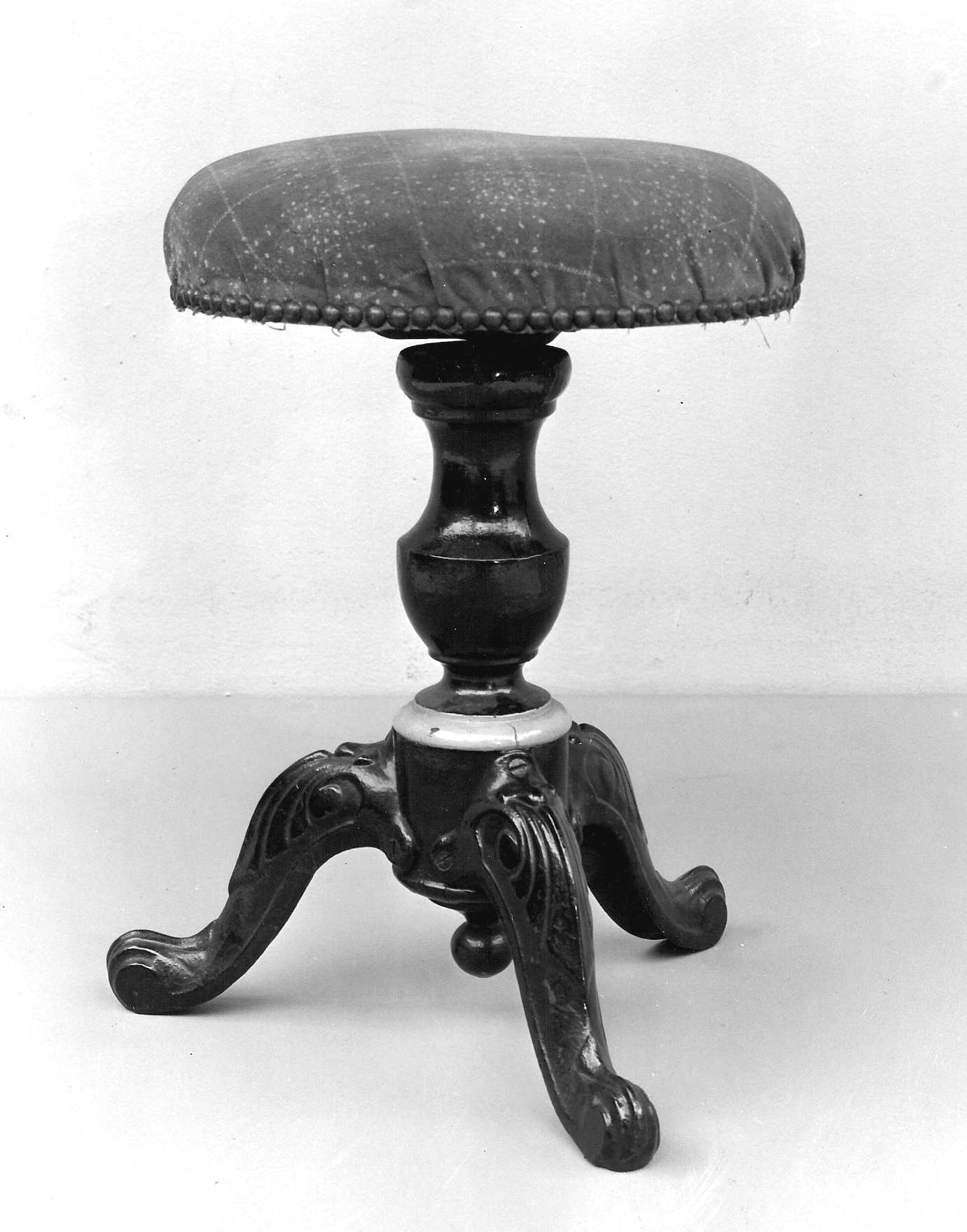Harmonium
Victor and Auguste Mustel French
Not on view
The harmonium is the term most commonly applied to reed pump organs made in Europe. This example was made by the venerable Parisian firm Victor and Auguste Mustel. Victor Mustel (1815–1890) was born in Le Havre and learned the carpentry trade. In 1844, he moved to Paris where he worked in several workshops building free reed instruments. He established his own firm in 1853 and won a prize for his harmonium design in the Paris exposition of 1855. He trained his son Auguste (1842
Stop knobs above keyboard: O/forte/expressif; SB/sub bass/16 pds; C/contre basse/16 p; B/basse/8 p; 5/harpe/eolienne/2 pds; 4/basson/8 pds, 3/clairon/4 pds; 2/bourdon/16 pds; 1/cor anglais/8 pds; 1p/percussion/et/cor anglais8 pds; E/expression; 1/flute/8 pds; 2/clarinette/16 pds; 3/fifre/4 pds; 4/hautbois/8 pds; 5/musette/16 pds; 6/voix celeste/16 pds; 7/baryton/32 pds/ 8/harp eolienne/8 pds; S/salicional/16 pds; O/forte/expressif
Technical description: Heavy rosewood veneer case with hinged cover over keyboard, with music rack attached beneath cover; keyboard with ivory naturals, ebony accidentals, compass C-c4; flanking and above keyboard, hand stops with white ceramic heads; two knee levers operate swell shutters; two levers operated by side of foot, next to pedals, operate forte-expressive mechanism; two pedals covered in red velvet operate two feeders below reservoir within case bottom; above this, a divided windchest holding eight complete sets of brass free reeds; windchest and key mechanism constructed in layers that can be hinged apart for access within; with a high mahogany chair, the back with six fluted pillars, the front two legs similarly decorated, the seat covered with red velvet.
Due to rights restrictions, this image cannot be enlarged, viewed at full screen, or downloaded.
This artwork is meant to be viewed from right to left. Scroll left to view more.





